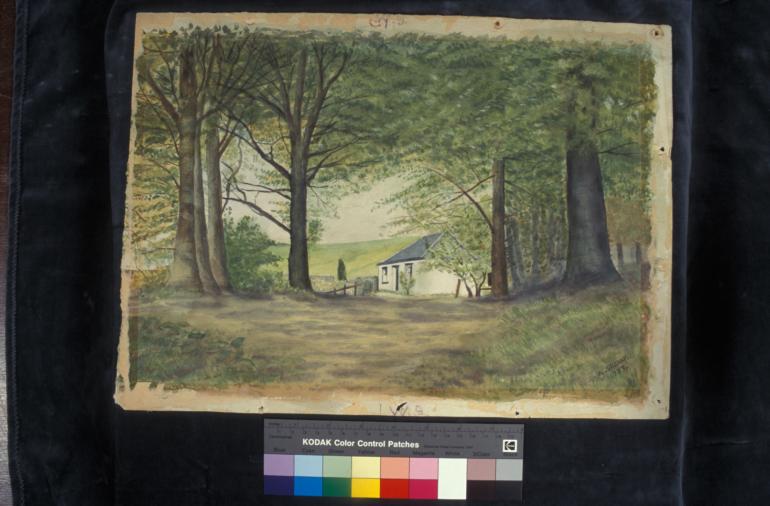Deterioration
Paintings are composite structures and there are complex interactions between the different components. Deterioration in paintings can stem from:
- poor artistic technique and material selection;
- chemical changes with time (natural ageing);
- changes due to external environmental conditions; and
- mechanical fatigue and physical damage.
Of these, poor artistic technique and material selection may be unavoidable and can contribute to a range of problems, particularly if successive paint layers were applied before the underlying layers dried sufficiently. In addition to problems associated with this ‘inherent vice’ of a painting, deterioration factors that most severely affect paintings include:
- temperature and relative humidity;
- light;
- pollution, including dust;
- biological deterioration; and
- physical effects including vibration, impact and poor handling
Fluctuations in temperature and relative humidity can cause painted canvas or wooden panels to expand under humid conditions and contract under dry conditions. These fluctuations may disrupt the bond between the paint layer and the support, leading to flaking and/or cracking paint, layer sagging or stretching of the support, desiccation and splitting, distortion or warping of the wooden elements and even mould growth under high relative humidity conditions. High relative humidity may also account for a chemical change from azurite pigments (blue) to malachite (green) compounds and the development of ‘blooms’ (a bluish-white haze) in varnishes, both of which affect the aesthetics of a painting. Exposure to elevated temperatures will accelerate chemical deterioration and may also cause paint binders to soften or break down.
Over-exposure to light is a major cause of deterioration for displayed artworks. Light can cause bleaching and fading of colours, particularly those derived from the dyes and lakes that are often used in watercolours (Figure 2). Light, particularly UV radiation, can promote chemical degradation such as chain scission of the cellulose in canvas which can potentially cause weakness (and subsequently tears) in the support or changes to the paint binders.
Figure 2: Watercolour painting showing fading due to light exposure.
Air pollutants such as sulphur dioxide, carbon dioxide, hydrogen sulphide and ozone will also damage paintings. Acids formed by sulphur dioxide and carbon dioxide in the presence of moisture will damage organic components, hydrogen sulphide can react with lead-based pigments and cause them to blacken and ozone, a powerful oxidiser, may cause fading, loss of tensile strength and accelerated aging.
Dust can cause deterioration by attracting moisture and insects and also by abrading the surface of a painting.
Mould is usually caused by excessive exposure to moisture, either as a result of high relative humidity (> 70 %) or flooding. As moulds feed on the binding medium, sizing in canvas or the paste used in a lining, they are most commonly seen on the reverse side of paintings.
Rodents and insects such as beetle larvae, termites and silverfish can attack the wooden panel supports or the wooden stretchers of canvas paintings. Take action to deter cockroaches and flies (see the chapter Mould and Insect Attack in Collections) as their excrement is disfiguring, can be very difficult to remove from the surface of artworks and because it is acidic, may damage the paint or varnish layers.
Many paintings on stretched canvas are very susceptible to physical effects such as vibrational forces, shock and impacts. Continual or excessive vibration, particularly during transportation or storage in areas subjected to extreme vibrations, can lead to paint loss. Paintings can also be damaged by poor handling or storage which may lead to tears, chipping, abrasion, loosening or even breakage of frames (Figure 3).
Figure 3: Oil painting damaged by poor handling and storage.
Paintings may also suffer because of the inherent instability of the materials from which they are made. Examples of these additional problems include:
- flaking of ochres as the support material for a bark painting attempts to return to its original shape;
- breakdown and yellowing of natural oil or resin-based varnish layers; and
- changes in colour and material failures as a result of using less stable, non-traditional materials. This is particularly so for paintings produced in the 20th century due to the immense range of synthetic materials that have become available to practising artists.
Poorly selected restoration materials may eventually lead to a visually incohesive artwork as those materials degrade and fade over time.


